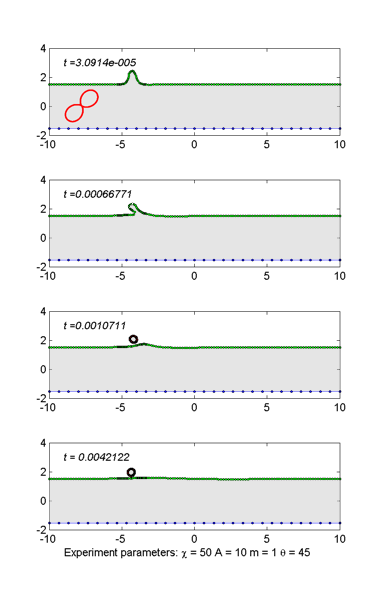 |
ELECTROMIGRATION INDUCED HILLOCK DYNAMICS ON THE INTERCONNECT SURFACE Two Fold Crystal Symmetry, {110} Planes in FCC We also investigated the tilt angle 45° in our simulation studies, there are two distinct regimes for this tilt angle, depending upon the applied electron wind intensities. For low and moderate electron wind forces χ=5−25 , the edge-Hillock without changing its general form slowly broadens and finally disappears completely without leaving any trace behind. The decay time depends upon the electric field intensity inversely and the diffusion anisotropy linearly. For high electron wind intensities χ≥50 , very interesting topological evolution occurs, which first time is observed by the computer simulation in the literature. Namely, the edge Hillock because of very high wind starts to bend over the leeside with certain degree of extrusion. Subsequently, this extruded part breaks up from the bottle neck portion, and becomes completely independent peach of object. In order to study the further behavior of this broken peace of metal, we allow it to be exposed to the electric applied electric field utilizing the fact that underlayer can act as shunt. The result as shown in Figure indicates that the broken peace takes the perfect circular shape and slowly drags towards the anode side of the interconnect line. The surface after the ejection of this peace of material becomes almost flat without any trace of perturbations. |